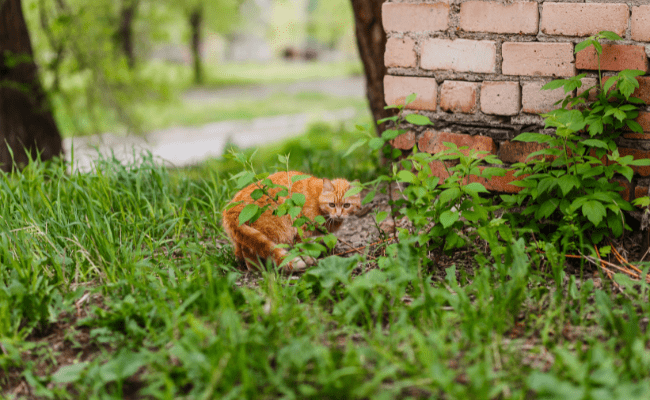Relocation is when a cat or colony of cats gets moved to a new place. There must be a good reason to do so, because experience has shown us that it is risky and often does not work.
There are many things that can go wrong when people try to relocate a group of community cats. Cats often disappear in a new location, or they die trying to return to the old location.
Sometimes there is a good reason WHY it must be done:
- their current location is dangerous (nearby highway, poisons or chemicals, coyotes, etc.),
- the property is being sold or renovated,
- the cats lost their caretaker and no one else can do it, or
- their lives are being threatened in some way.

For these reasons Alley Cat Advocates strongly urges caretakers NOT to move cats to a new location, unless there is a dangerous situation like one listed above. There is just too much that can go wrong. It takes a lot of planning and hard work, only to see cats die or disappear.
If this is something you are thinking about doing, please read this article and talk to someone at Alley Cat Advocates for advice.
Things that can go wrong:
- Existing cats or other animals in the new area will drive them away to protect their territory.
- Cats who find themselves in a strange place have a strong instinct to go back home. Unfortunately, they can easily get lost or hurt while crossing busy roads.
- Dangers in the new location may exist that you don’t know about – wild dogs in the area, open wells or pits that cats can get trapped in, or people who are cat haters.
- Kittens have to stay with their mother until they are 6 months old. Separating them causes major problems.
- Moving a large colony can create a void or vacuum effect in the former location. It would allow new community cats to move into thesame area if there is shelter and food available. Then you would be right back where you started.
- Cats in the same colony are like a family. They depend on each other for survival. They are bonded to their neighborhood and their caretaker. Moving them to a new location is like tearing a family apart. This results in stress, fear, loneliness, and depression.
After you have spoken to a cat expert and have determined the cats must be relocated, please follow these guidelines to increase chance of success:
Step 1: Prepare
- Take your time in finding a safe and permanent home, with a caretaker who is committed to lifelong feeding, watering, medical care, and watching over them.
- Find a temporary room or safe area (in the new location) that is clean, quiet, not too hot or cold, and protects cats from weather. Be sure there is enough light and air to breathe. An empty garage or shed often works.
- You will need to acquire some dog crates (minimum size 2 feet by 3 feet). Cats relocate best when paired so acquire enough crates to house the number of cats you’re relocating in pairs.
- You also need to gather litter, litter pans, food and water bowls, a small carrier for the cat to hide in, and enough old bedsheets to cover the crate(s). This helps reduce their stress.
Step 2: Confine
- After cats are trapped or caught, they must be kept in the crates for at least 2 weeks at the new location.
- This two-week period helps them get adjusted to sounds, sights and smells, as well as existing cats or animals and the new caretaker.
- The new caretaker must give them daily care, food, water and litter box cleaning.
- During the first two days, the cats will likely struggle to find a way to escape, especially at night. They will calm down after a while, once they learn they will not be harmed.
Step 3: Tips for New Caretaker
- Feed cats on a regular schedule, preferably twice a day. Wet and dry food.
- Rattle the cat food box or bowl each time before feeding, so the cats learn that sound means time to eat!
- Keep dog crate(s) covered with old sheets or large towels to reduce stress.
- At least 2 or 3 times per day, attempt to talk soothingly to the cats. This will help a bond between cat and new human to develop and grow.
- If a cat escapes during the two-week period, make sure food and water is left out. Also sprinkle their used litter (for scent) around the area. Cats often hide for a day or two but will stay close by. Leaving food and water out helps prevent them from leaving the area.
- When the cats are ready for release, continue the same feeding schedule in the same area. Do not change anything except setting the food and water bowls right outside the dog crate
- After they are first released, they will probably run and hide. Just keep doing what you are doing, and they will eventually come out when they hear the rattling sound of the cat food box or bowl.
- After a week, the cats should be comfortable in their new, larger surroundings and the dog crate can be removed.

